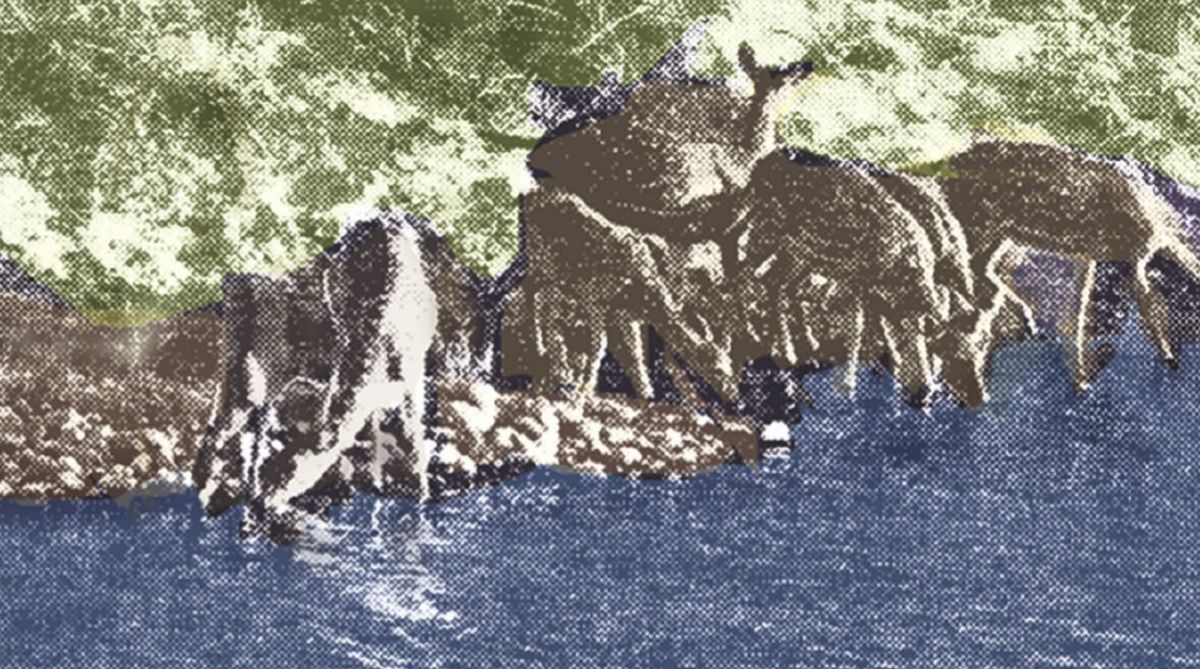MR Negi, the knowledgeable and keen officer of the National Park, told me I would see great herds of chital, each up to a hundred strong, as evening set in.
They spend the day, like most other animals here, within the seclusion of the sal forest, where they are comparatively free from disturbance by men, and come out to feed in the miles of open scrub in the evening; they spend the night out in the open, and return to the forest cover early in the morning.
Advertisement
Chital, normally, are diurnal in the main, but here they have turned largely crepuscular and nocturnal because during the day there are so many timber trucks and automobiles about, men at work and men on holiday ~ the timber logging, clearing and transport, and other work, has to be done before the rains set in and the roads from the National Park get blocked.
I did not see the great herds of chital that Mr Negi had mentioned, and after two days with me, he too had to realize that owing to the constant disturbance they had split into small parties, and become extremely fugitive.
There were hundreds of chital in the park from all right, but they were very shy and wary, as I was assured they had not been till recently. They emerged from the sal cover in the evenings in apprehensive little parties that stood inside the treeline, peered anxiously at the road outside, and then tripped across quickly in Indian file.
Once they were deep in the open, these small parties often united into a herd, but even then they kept a sharp lookout for men and motor vehicles going along the roads across the scrub. In the night, I suppose, they found some peace from men.
Watching their return to the tree cover early in the morning from a treetop hide, I noticed the same tendency to split into small parties, halt before they reached the road to peer anxiously ahead, and then cross quickly into the forest.
Elsewhere, too, I have known chitals behave in this fugitive manner and keep more closely to the cover than they normally do and become furtive creatures of the half-light and darkness, where the disturbance from men by day is sustained. Watching these deer, I could understand the pride of the officials of the park in them.
Chital attain as big a size here as they do anywhere, and have splendid antlers, but I do not think the claim that the finest chital in India are to be found only here is true. They attain as splendid a development of body and antlers in other places too, in Madhya Pradesh, else-where in U.P., and even in some parts of the South.
The truth about the prettiest and most versatile of all our deer is that it can live in practically any kind of terrain covered with vegetation where there is water, is plains forests, in hill forests, in coastal jungles and inland scrub. Water it must have, for it is a thirsty creature, and being fast-breeding and highly adaptable, it survives hazards to which other deer succumb.
However, I think that it is in the areas that specially suit chital that they go about in large herds and attain their best development, and such areas are not densely forested, without expanses of open scrub ~ incidentally, these are their oldest and best-known homes.
In May, the Ramganga was shallow and fordable in places, and the chital and other animals crossed the river at these natural fords. There is tree forest on either side of the river (featuring sissoo in the main), and clear, flowing water for many miles.
I wonder if an expansive tract of open, grassy scrub cannot be created artificially beyond the farther bank (the bank away from the rest house) to provide chital, hog deer and even elephants with grazing ground when much of their present feeding grounds, near the sal forest, is drowned by the water spread of the hydel project coming up here.
This was published on 15 June 1969.











